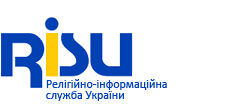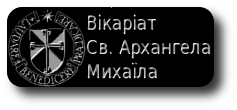
Benedict XVI's Turn Toward Mary
12-06-2010
STUBENVILLE, Ohio, JUNE 11, 2010 (Zenit.org).- "Immaculate Mother, in this place of grace, called together by the love of your Son Jesus the Eternal High Priest, we, sons in the Son and his priests, consecrate ourselves to your maternal Heart, in order to carry out faithfully the Father's Will" (Benedict XVI, Fatima, May 12, 2012).
What is the "heart" of Mary? St. John Eudes, master of the devotion to the Hearts of Jesus and Mary, explains that the heart designates the entirely of the person: his will, his intellect, his soul, his passions, and even incorporates his body in so far as it includes reference to the physical organ. Scripturally, "heart" signifies person, much more than "head" signifies person.
Consider, in pondering the mystery of the Immaculate Heart of Mary, the perspective of three Persons.
The Father looks down upon the heart of his immaculate daughter and sees his greatest created masterpiece, second only to the sacred humanity of his incarnate son. Far beyond the seven natural wonders of the world or even the heavenly cosmos, the Immaculate Heart represents the greatest craftsmanship of the Creator. Full of grace beyond all other creatures both quantitatively and qualitatively, the heart of Mary exceeds the ark of the covenant as a dwelling place of God the Father, who has the greatest paternal predilection for his daughter's heart -- a filial heart who returns his divine love with a perfect and perennial human "yes" of love and abandonment to her Abba.
The Son gazes at the Immaculate Heart and his heart leaps with infinite joy, reverence, and gratitude for his all-loving mother. If sons instinctively honor and defend their mother by some embedded code of natural law, how much infinitely more does a divine son love his tender, compassionate human mother? Jesus also sees in the mystery of the Immaculate Heart the means by which he received his own human heart, as blood pumped from that stainless maternal heart flowed into her spotless womb to form the human heart of the divine Redeemer.
This is why the saints never separate the Hearts of Jesus and Mary in their spirituality. Eudes will add that their hearts are so inexplicably united in perfect conformity to the Father's will that it is most accurate to speak about the one, single "Heart of Jesus and Mary."
Spirit's shadow
The Holy Spirit marvels at the pure heart of his human spouse. The Old Testament "shekinah," or holy cloud that would overshadow the ark to animate it with the presence of God, was a mere foretaste of the Spirit's overshadowing of Mary at the Annunciation, in order that the divine and human spouses could come together to bring the world its Savior.
St. Maximilian Kolbe is right. The concrete sign of the Holy Spirit is the Immaculate Heart of Mary, and, not through necessity, but by divine disposition, the Holy Spirit acts only through the Immaculata, his human spouse and mediatrix of all sanctifying graces and gifts of the Spirit.
When Benedict XVI consecrated the priests of the world to the Immaculate Heart of Mary during his recent Fatima pilgrimage (May 12), the Pontiff both confirms the importance of the Fatima message for today, which so strongly accentuates devotion and reparation to the Immaculate Heart of Mary, and also signals the quintessential relevance and spiritual dynamism of this devotion for the contemporary Church and world.
The Holy Father, whose already solid Marian devotion seems to growing by the week, went on to refer to Our Lady as the "advocate and mediatrix of grace" in his priestly consecration to the Immaculate Heart at Fatima. Catholic media rightly interpreted the joining of the titles of mediatrix of grace and advocate as a significant step toward a potential Marian dogma of these titles.
On the following day, the great May 13 Fatima anniversary, Benedict XVI offered a succinct but profound teaching on Christian co-redemption, which peaked by focusing on the Spiritual Motherhood of Mary at the foot of the cross. As the Holy Father was about to process with our Eucharistic Jesus amidst the sick and suffering, he identified those who would unite their sufferings to that of Christ as "redeemers with the Redeemer" and reminded them that at the cross stands the mother of Jesus, who is also our mother: "Dear friends who are sick [...] entrust to [Jesus] every setback and pain that you face, so that they may become -- according to his design -- a means of redemption for the whole world. You will be redeemers with the Redeemer. [...] At the cross [...] stands the mother of Jesus, our mother" (May 13, 2010).
Preparing the way
Here the Vicar of Christ illustrates not only that we are all called to be "redeemers" by uniting our sufferings with the sufferings of the one divine Redeemer, but also directs our gaze to the woman-mother who suffered with her crucified Son as a co-redeemer. As one Catholic journalist commented, "This can only support and set the stage for a deeper understanding of Mary as co-redemptrix and a potential papal definition. What else could it mean, that we, as members of Christ's faithful are all redeemers with the Redeemer in our sufferings, but Mary alone is not a co-redeemer? No, on the contrary, the Pope's words are a theological preparation."
Most recently, during Benedict XVI's ecumenical journey in Cyprus (June 4-6), the Holy Father again preached Mary's unique coredemptive role with Jesus: "God had chosen her, his lowly handmaid, to cooperate with him in his saving work. How we rejoice at the generosity of her response! [...] Some 30 years later, as Mary stood weeping at the foot of the cross, it must have been hard to keep that hope alive. The forces of darkness seemed to have gained the upper hand. And yet, deep down, she would have remembered the angel's words.
"Even amid the desolation of Holy Saturday, the certitude of hope carried her forward into the joy of Easter morning. [...] Let us now implore Mary our Mother to intercede for all of us, for the people of Cyprus, and for the Church throughout the Middle East with Christ, her Son, the Prince of Peace."
As the Church and world scene grow in complexity and gravity, Benedict XVI seems to be turning more and more to the Mother.
The principle is simple yet sublime. The more the Immaculate and Co-redemptive Heart of Mary is proclaimed and accepted, the more the Sacred and Eucharistic Heart of Jesus is adored and reverenced, and consequently peace of Christ, the only authentic foundation for global peace, can be restored to the hearts of humanity.
Let us pray daily for the solemn definition of Our Lady's spiritual motherhood as co-redemptrix, mediatrix of all graces, and advocate, which truly reveal the saving actions of motherly intercession which come forth from her Immaculate Heart, and thus to bring the Church and the world a giant step closer to the Fatima-prophesied "Era of Peace."
* * *
Mark Miravalle is a professor of theology at Franciscan University of Steubenville. Author of more than a dozen books on Mariology, and editor of "Mariology: A Guide for Priests, Deacons, Seminarians, and Consecrated Persons," he wrote "The Seven Sorrows of China" in 2007. He is married and has eight children.
http://www.zenit.org/article-29573?l=english














